The recent spell of fine weather has done wonders for the garden. Roses are looking well and the mop head hydrangeas are good too. We have a hedge of lace-cap hydrangeas called ‘Pinkie Winky’ and they too have held on to their flower heads since emerging in early June.
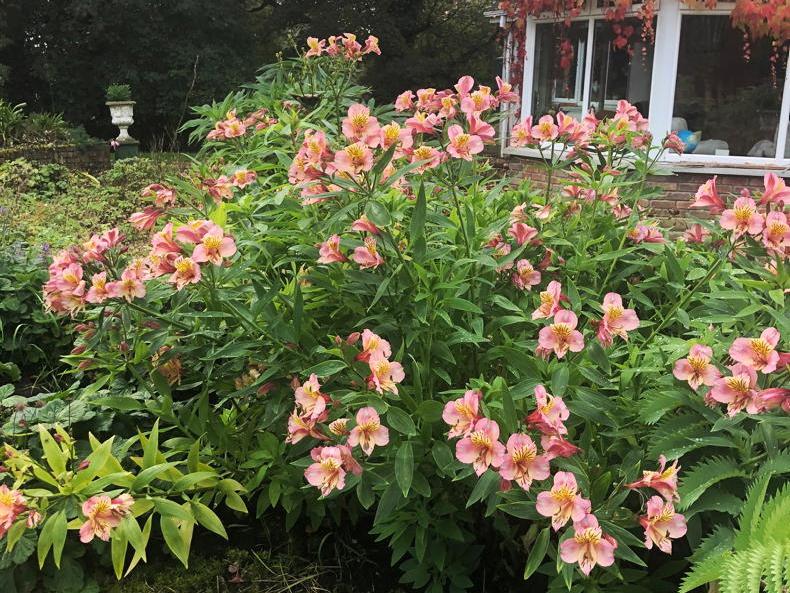
Alstroemerias flower for months and months.
But what’s putting on the best display has to be the alstroemerias. They are flowering since May and are now looking as well as they ever did. I reckon they will still be in flower for Christmas. A few more of these easy care beauties are on my buy list for next year.
Leaf blower
There’s a good few trees around our garden and we have Boston ivy on the house so you can imagine the amount of leaves that get blown all about the place at this time of year. Raking them off the gravel and grass is a time consuming chore.
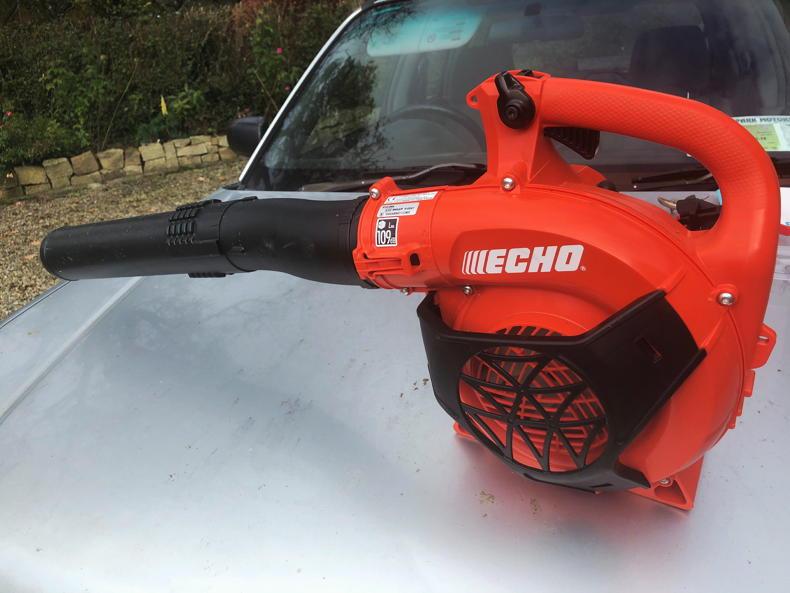
Take the drudgery out of gathering leaves with a leaf blower.
So this autumn we invested in a leaf blower and what a difference it makes. What used be drudgery now gets done in minutes. The blower is lightweight and even I can use it. It’s an Echo and runs off a 25cc petrol powered engine and cost us €280. A great Christmas present for the groundsman in your life.
Great return for a small investment
After buying 25kg of ‘Dutch Master’ daffodils, my husband Sean and myself got down to planting them last week. We were filling in the green verges along the lane in spots where the daffodils are a bit sparse.
We came across several old clumps and we divided them so hopefully they will flower again next spring. We have about 7,000 daffodils on both sides of the lane and how do I know that? Well I deadhead them in bunches of a hundred so it’s easy to keep track.
Most of the daffodils along the lane were planted 20 years ago and still produce a wonderful show. A great return for a very small investment.
The unknown thief
A few days after we did all that daffodil planting Sean arrived into the kitchen to tell me some of our work had been undone and the bulbs were gone. Sure enough, the sod was disturbed on six planting spots and no sign of a bulb.
As most of the new planting was done near the house it’s unlikely to have been a human culprit. The dogs wouldn’t be bothered. It could be the crows, but we think it’s badgers.
I’d love to hear from anyone who had the same experience. The culprit hasn’t been back – mustn’t have liked the taste of daffodil bulbs which are toxic.
Time to...
Gather up leaves. Wet leaves are a menace underfoot and for that reason alone you need to keep paths clear. Stored in a dry place they make a nice mulch for flower borders.
Mow the lawn. A tightly mown lawn shows off naturalised snowdrops and daffodils to great effect.
Plant bulbs. There’s still plenty of time to plant bulbs, check out a good garden centre or buy online.
Tulips can brighten a border and if you take care of them they will come back year after year, so says Damian McHugh of www.bulbs.ie which is based in Tullamore. Here’s his growing advice and five to liven up your garden:
If you want your tulips to repeat then the secret is to lift and divide them every year or so. Tulips are capable of tripling in number every year so it is important to divide them or the flowers will disappear.
It’s a good idea to divide tulip bulbs after flowering because it’s very good for them. So the best time to do this dividing is when you can gently pull away the wilted foliage (June).The bulbs can then be left in the ground or they can be divided, cleaned, tidied up and replanted straight away or they can be cleaned and stored in a dry place until they are replanted in autumn. Be sure to apply a liquid fertiliser for a month or so after flowering.

Red Riding Hood.
Red Riding Hood is early to flower, making its first appearance in April. The leaves are variegated and the scarlet petals are pointed. It grows to about 12 inches and makes for a perfect “look at me” clump in a border or in pots outside the front door.
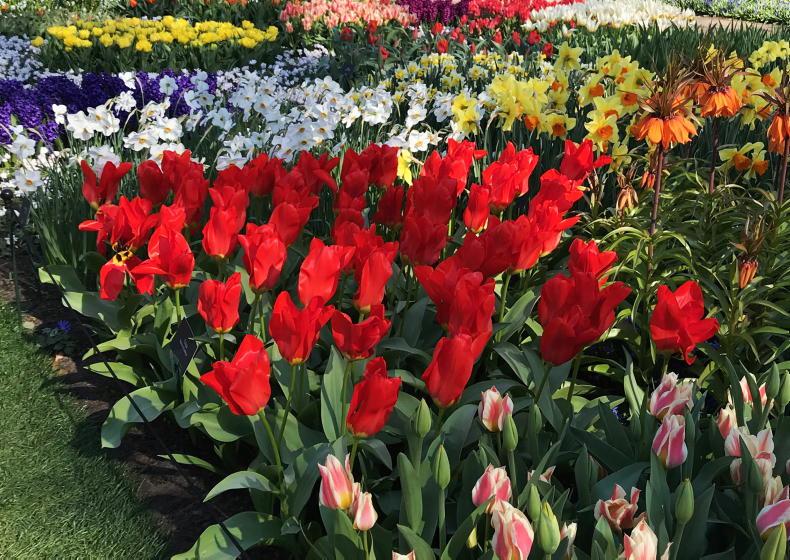
Madam Lefeber.
Madam Lefeber is a vibrant electric red tulip that turns yellow near its base and has a back centre. It flowers from late March and looks great alongside daffodils. They are good to naturalise but divide them regularly.

Paul Scherer.
Paul Scherer is a stunning purple/black tulip. It flowers in May and looks great planted in drifts. It’s not as well-known as Queen of the Night, another of these dramatically dark tulips. It has an Award of Garden Merit from the Royal Horticultural Society (RHS).

Pink impression.
Pink Impression has a large goblet like head and flowers through April and May. It’s a tall tulip and as its name implies makes a big impression at the front of a border.
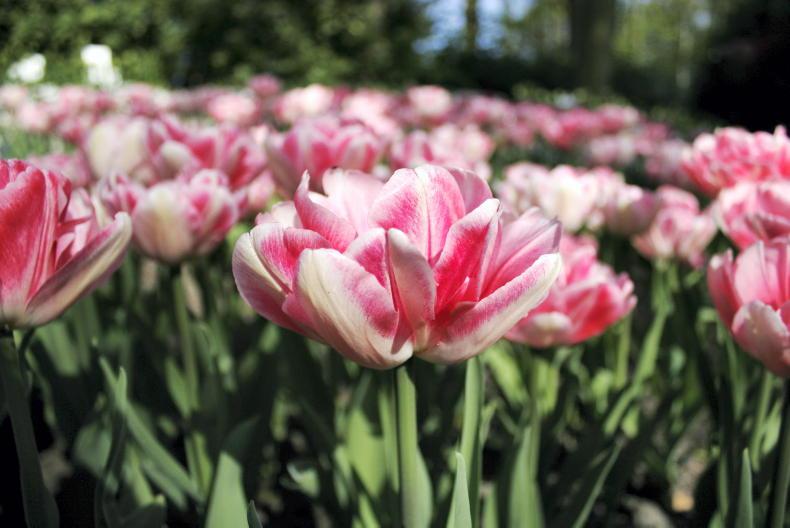
Foxtrot.
Foxtrot is a peony tulip that’s pink in colour and grows to 12 inches. It has a double set of petals, makes its first appearance in March and stands up well to bad weather.
The recent spell of fine weather has done wonders for the garden. Roses are looking well and the mop head hydrangeas are good too. We have a hedge of lace-cap hydrangeas called ‘Pinkie Winky’ and they too have held on to their flower heads since emerging in early June.

Alstroemerias flower for months and months.
But what’s putting on the best display has to be the alstroemerias. They are flowering since May and are now looking as well as they ever did. I reckon they will still be in flower for Christmas. A few more of these easy care beauties are on my buy list for next year.
Leaf blower
There’s a good few trees around our garden and we have Boston ivy on the house so you can imagine the amount of leaves that get blown all about the place at this time of year. Raking them off the gravel and grass is a time consuming chore.

Take the drudgery out of gathering leaves with a leaf blower.
So this autumn we invested in a leaf blower and what a difference it makes. What used be drudgery now gets done in minutes. The blower is lightweight and even I can use it. It’s an Echo and runs off a 25cc petrol powered engine and cost us €280. A great Christmas present for the groundsman in your life.
Great return for a small investment
After buying 25kg of ‘Dutch Master’ daffodils, my husband Sean and myself got down to planting them last week. We were filling in the green verges along the lane in spots where the daffodils are a bit sparse.
We came across several old clumps and we divided them so hopefully they will flower again next spring. We have about 7,000 daffodils on both sides of the lane and how do I know that? Well I deadhead them in bunches of a hundred so it’s easy to keep track.
Most of the daffodils along the lane were planted 20 years ago and still produce a wonderful show. A great return for a very small investment.
The unknown thief
A few days after we did all that daffodil planting Sean arrived into the kitchen to tell me some of our work had been undone and the bulbs were gone. Sure enough, the sod was disturbed on six planting spots and no sign of a bulb.
As most of the new planting was done near the house it’s unlikely to have been a human culprit. The dogs wouldn’t be bothered. It could be the crows, but we think it’s badgers.
I’d love to hear from anyone who had the same experience. The culprit hasn’t been back – mustn’t have liked the taste of daffodil bulbs which are toxic.
Time to...
Gather up leaves. Wet leaves are a menace underfoot and for that reason alone you need to keep paths clear. Stored in a dry place they make a nice mulch for flower borders.
Mow the lawn. A tightly mown lawn shows off naturalised snowdrops and daffodils to great effect.
Plant bulbs. There’s still plenty of time to plant bulbs, check out a good garden centre or buy online.
Tulips can brighten a border and if you take care of them they will come back year after year, so says Damian McHugh of www.bulbs.ie which is based in Tullamore. Here’s his growing advice and five to liven up your garden:
If you want your tulips to repeat then the secret is to lift and divide them every year or so. Tulips are capable of tripling in number every year so it is important to divide them or the flowers will disappear.
It’s a good idea to divide tulip bulbs after flowering because it’s very good for them. So the best time to do this dividing is when you can gently pull away the wilted foliage (June).The bulbs can then be left in the ground or they can be divided, cleaned, tidied up and replanted straight away or they can be cleaned and stored in a dry place until they are replanted in autumn. Be sure to apply a liquid fertiliser for a month or so after flowering.

Red Riding Hood.
Red Riding Hood is early to flower, making its first appearance in April. The leaves are variegated and the scarlet petals are pointed. It grows to about 12 inches and makes for a perfect “look at me” clump in a border or in pots outside the front door.

Madam Lefeber.
Madam Lefeber is a vibrant electric red tulip that turns yellow near its base and has a back centre. It flowers from late March and looks great alongside daffodils. They are good to naturalise but divide them regularly.

Paul Scherer.
Paul Scherer is a stunning purple/black tulip. It flowers in May and looks great planted in drifts. It’s not as well-known as Queen of the Night, another of these dramatically dark tulips. It has an Award of Garden Merit from the Royal Horticultural Society (RHS).

Pink impression.
Pink Impression has a large goblet like head and flowers through April and May. It’s a tall tulip and as its name implies makes a big impression at the front of a border.

Foxtrot.
Foxtrot is a peony tulip that’s pink in colour and grows to 12 inches. It has a double set of petals, makes its first appearance in March and stands up well to bad weather.








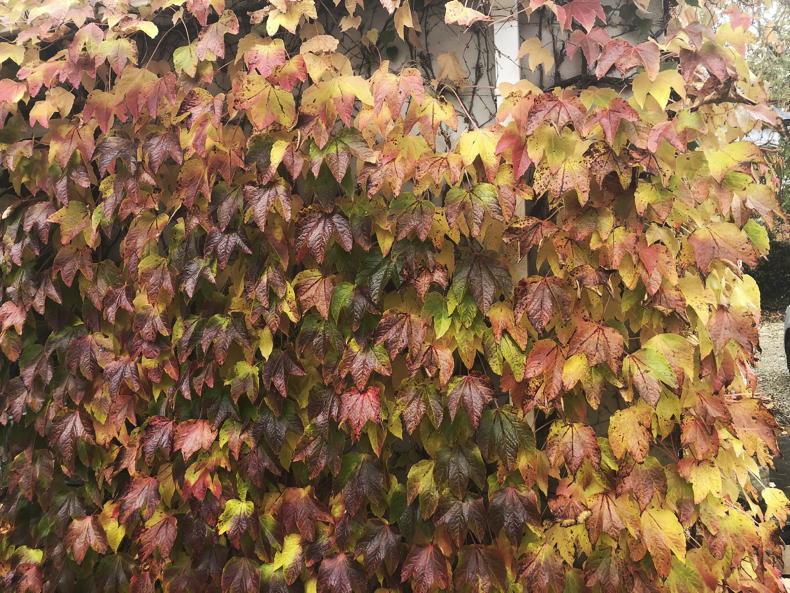




 This is a subscriber-only article
This is a subscriber-only article










SHARING OPTIONS: